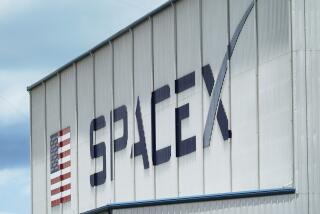Smashing Idea
- Share via
Any day now, if he hasn’t already done so, President Reagan will decide whether to make every physicist in America happy by endorsing the plan to build a giant atom smasher that would cost $6 billion over 10 years. The physicists have made a compelling case for this machine, which would be a ring 52 miles in circumference that would dwarf every atom smasher in existence and, the scientists hope, reveal the innermost secrets of matter.
Not only is this Superconducting Super Collider the largest scientific instrument ever contemplated, it is also the most expensive--a problem in the Gramm-Rudman era. Scientists in other disciplines are understandably concerned that the cost of the machine ($4 billion in 1984 dollars and $6 billion in inflated dollars by the time it is finished) will come out of their budgets, at least in part. They are putting together their own big-science projects to present to Washington and the public, and they are making strong cases for them. Biologists are floating a plan with a modest $1-billion price tag to completely determine the full sequence of human DNA--an undertaking with incalculable benefits for medicine.
These endeavors are expensive, but who can say no to them? The physics machine is the kind of activity that our society must undertake for reasons of both intellect and practice. Science is the hallmark of our age, and our most distinctive characteristic. Our culture is built on it and depends on it, and our future depends on it. The giant atom smasher is an investment in that future.
The Super Collider (can we agree to drop the word superconducting from its name?) would provide the next breakthroughs in our understanding of matter. That alone is a very good reason to build it. It would also spark the next generation of technology and technological spinoffs, which are unpredictable by nature. And it would maintain theoretical physics as a vibrant, vital field that attracts the brilliant people required to do it.
We should take care to nurture science and scientists. Money spent on theoretical science is money well spent. A society that had its priorities straight would have no trouble taking the money for the physicists’ atom smasher and the biologists’ DNA project from the bloated budgets of the Pentagon and farm-price supports. What the scientists are proposing should rank high on our list of national objectives.






